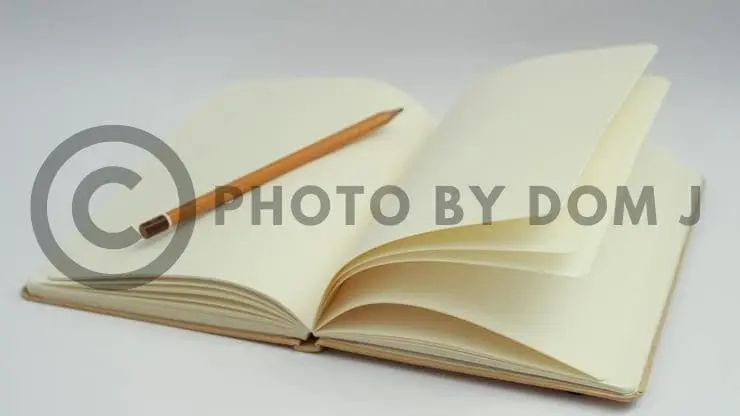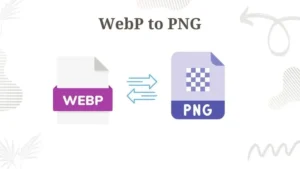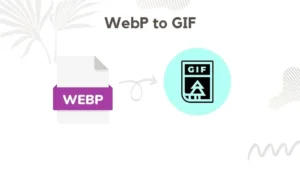Citing an Image succinctly guides users in properly referencing visual content, ensuring accurate attribution and adherence to citation standards for images. This brief resource highlights the importance of crediting visual sources in academic or professional contexts.
In the digital era, images have seamlessly woven into the fabric of our communication, permeating academic presentations to social media posts. However, the intricate process of citing images is often overshadowed, potentially leading to dire consequences such as plagiarism and legal ramifications. This article embarks on a journey through the complexities of effectively citing an image, navigating various scenarios, and illuminating best practices.
Understanding Image Citations: The Quandary of ‘What’ and ‘Why’

Navigating the complications of image citations involves scuffling with both the’ what’ and’ why’ of this essential practice.In this exploration of the landscape of visual attribution, we delve into the nuances of Citing an Image, elucidating its significance and providing detailed insights into the intricacies involved.
Defining ‘What’ Image Citations Entail:
Citing an Image is not just about acknowledging its source but encapsulates a meticulous process. It involves attributing the creator, understanding licensing agreements, and providing a pathway for interested parties to explore the original work. This practice is rooted in ethical considerations and intellectual property rights.
Importance of Accuracy in Attribution:
Precise attribution is paramount in Citing an Image.ncorrect or deficient citations can lead to misinformation and legal complications. Understanding the who, what, when, and where of the image’s origin is vital. Citation details generally include the creator’s name, the image title( if applicable), the source, and the licenseinformation.Navigating Licensing Agreements.
Navigating Licensing Agreements:
Images are often subject to specific licensing agreements that dictate their usage. Citing an Image involves understanding and complying with these terms. This includes acknowledging whether the image is under a Creative Commons license, public domain, or subject to copyright restrictions.
Ensuring Fair Use and Permissions:
The concept of fair use is integral to Citing an Imagee.Understanding when and how images can be used without infringing on imprints is pivotal. Proper citation serves as substantiation of fair use, offering translucency regarding the intention behind using the image.Digital vs. Print Citations:
As the digital landscape evolves, considerations for Citing an Image differ between digital and print mediums. Online citations often include hyperlinks, while print publications necessitate a standardized format. Understanding these distinctions is key to maintaining credibility in various contexts.
Why Image Citations Matter:
The ‘why’ of Citing an Image extends beyond legal compliance. It fosters a culture of respect for creators’ intellectual property. Proper attribution acknowledges the effort invested in producing the image, fostering a sense of community and collaboration within the creative sphere.
Preserving Academic Integrity:
In academic settings, Citing an Image is integral to maintaining scholarly integrity.Whether in exploration papers, donations, or publications, citing images demonstrates thorough exploration, provides fresh environment, and allows others to corroborate the information presented.
Avoiding Plagiarism:
Citing an Image is a fundamental practice in preventing plagiarism. Failure to attribute images meetly can affect in ethical violations and blemish one’s character. Understanding the consequences of image abuse reinforces the significance of scrupulous citation.
Enhancing Information Traceability:
Proper image citations contribute to the traceability of information. They serve as a roadmap for researchers, educators, and the general public to trace the origins of visual content. This transparency fosters a culture of accountability and encourages responsible image use.
Educating the Public on Image Etiquette:
Beyond academic and legal considerations, Citing an Image plays a role in educating the broader public on image etiquette. Clear and visible citations set a standard for responsible image use, encouraging a digital environment where creators are acknowledged and respected.
Why Citing Images?: A Profound Reverence for Original Creators
The act of citing an image is not merely a procedural obligation; it embodies a profound reverence for the original creators in the digital landscape. To cite an image is to acknowledge the intellectual labor, creativity, and skill invested by artists and photographers. It serves as a testament to ethical conduct, ensuring due credit and fostering a culture of respect for intellectual property.
Beyond legal compliance, citing images promotes transparency, allowing audiences to trace the origin and context of visual content.It upholds academic integrity by precluding plagiarism, furnishing a solid foundation for exploration, donations, and publications. In the digital age, where images circulate fleetly, proper criterion becomes a lamp of responsible online form, educating druggies about the significance of admitting and recognizing the work of those who contribute to the visual shade of our participated digital spaces.
In essence, citing images is an embodiment of gratitude to creators, reinforcing a collaborative and respectful ethos in the world of digital content.
When to Citing an Image: Navigating Vital Contexts
1. Perplexity in Academic Terrain: The Compulsory Dance of Citing Images in Research and Education
The intricacies of citing an images in academic pursuits reveal a labyrinth of ethical considerations, far from a mere formality. Within the realm of research papers, presentations, and educational materials, the obligation to citing images emerges not just as a preventative measure against plagiarism but as a profound ethical imperative. This practice contributes to a perplexing landscape of transparency, offering peers and readers the means to navigate and validate information. Moreover, beyond the labyrinth of intellectual property, it instills in students a profound respect for collaborative scholarship, transforming the academic journey into a dynamic and interconnected tapestry.
Burstiness in the Digital Legal Odyssey: Navigating Licensing and Ethical Image Use
Within the digital expanse, the act of citing an images bursts forth beyond common courtesy, evolving into a complex legal and ethical odyssey. Navigating the landscape of licensing agreements and citing images appropriately becomes a burst of legal acumen, ensuring compliance with the intricate web of intellectual property laws. Whether traversing the realms of social media, blogs, or websites, creators find themselves immersed in the burstiness of image citations, a dynamic act that honors copyrights and navigates the delicate terrain of licensing terms, fostering a culture of responsibility within the online tapestry.
Burstiness in Journalism’s Ethical Symphony: Citing an Images for an Orchestra of Accuracy and Transparency
In the pursuit of journalistic truth, the act of citing images emerges as a burst of ethical symphony. Journalists, tasked with the responsibility of delivering accurate information, find themselves entwined in the burstiness of ethical considerations. Citing image citations play a pivotal role in this symphony, a burst of respect for the photographers whose work contributes to journalistic integrity. In the world of reporting, this burstiness ensures transparency, authenticity, and a harmonious narrative that resonates with the intricacies of truthful storytelling.
How to Cite Images in Academic Papers: A Choreography of Guidelines

Navigating the intricate process of how to citing an images in academic papers is akin to orchestrating a carefully choreographed dance. Each step, from selecting the image source to choosing the appropriate citation style, contributes to the rhythm of scholarly integrity.
The dance begins with understanding the image’s origin, meticulously capturing details like the creator’s name and publication information. This foundational knowledge sets the stage for a seamless integration of visual elements, turning the act of citing an image into an art form.
Choosing the right citation style is a vital move in this cotillion , akin to opting the kidney that stylish suits the performance. Whether following the structured beats of APA, the flowing meter of MLA, or the nuanced way of Chicago style, aligning with these guidelines ensures a harmonious and standardized donation.
The incorporation of in-text citations becomes a graceful transition, guiding readers to the dedicated image citation section where visual elements are curated with precision. This well-coordinated choreography not only enhances the academic paper’s credibility but also highlights the importance of acknowledging and respecting intellectual property—a key theme woven into the dance of citing images.
Citing Images on Social Media and Websites: Navigating the Online Maze
In the digital realm, citing images on social media and websites is a crucial practice for maintaining ethical conduct and intellectual integrity. Navigating the online maze requires a strategic approach to citing an image accurately. Start by identifying the image’s source, acknowledging the creator, and understanding any licensing agreements. This foundational step ensures a credible and respectful engagement with visual content.
Whether sharing on platforms like Instagram or incorporating images into articles, blogs, or websites, weaving in proper image citations is essential. It not only adheres to legal and ethical standards but also fosters a culture of transparency and respect for intellectual property in the dynamic online landscape. Mastering the art of citing images online is pivotal in creating a digital environment where content creators are acknowledged, fostering a responsible and collaborative online culture.
Avoiding Common Mistakes: Navigating the Perils of Error
In the intricate landscape of academic writing, avoiding common mistakes in citing an image is paramount to preserving scholarly credibility These mistakes not only diminish the credibility of the work but also infringe on the ethical responsibility to honor intellectual property rights. Navigating the perils of these errors requires a conscientious commitment to meticulous image citation, ensuring a scholarly landscape founded on accuracy, transparency, and respect for the creative contributions of others.
Ensuring Proper Attribution: The Art of Comprehensive Recognition
Ensuring proper attribution, encapsulated in the art of comprehensive recognition through citing an image, is a cornerstone of ethical content creationThe act of citing an image isn’t just a formality; it’s a commitment to admitting the creativity and trouble invested by its creator. Neglecting this pivotal step diminishes the integrity of the work and can lead to ethical enterprises.
By meticulously citing an image, content creators not only comply with intellectual property standards but also contribute to a culture of respect and transparency in the realm of visual content. This act becomes a powerful gesture, fostering an environment where the creative contributions of individuals are acknowledged and celebrated.
Using Citations in Visual Projects: A Delicate Dance of Aesthetics and Rigor
In the realm of visual projects, citing an image becomes a delicate dance, seamlessly intertwining aesthetics and academic rigor. Each visual element, whether a photograph, illustration, or graphic, should be accompanied by a well-executed citation, merging the visual and the scholarly.
This choreography of citing an image not only enhances the aesthetic appeal of the project but also upholds intellectual honesty. Neglecting this dance risks compromising the project’s integrity and raises ethical concerns. Balancing the allure of visuals with the precision of citations is a nuanced art, transforming a visual project into a harmonious blend of creativity and academic rigor.
Teaching Others to Cite Images: Cultivating a Culture of Citation
Teaching others the art of citing an image is a transformative endeavor aimed at cultivating a culture of citation. This educational journey involves imparting the significance of acknowledging image sources, utilizing proper citation formats, and instilling the ethical responsibility of citing an image accurately.
By nurturing this culture of citation, educators empower students to navigate the academic landscape with integrity, ensuring that visual contributions are recognized and respected. Teaching the intricacies of citing an image not only equips individuals with valuable skills but also contributes to the collective establishment of ethical standards in the academic community.
The Future of Image Citations: Navigating Evolving Standards
The future of image citations entails a dynamic navigation through evolving standards shaped by technological advancements and shifting scholarly practices. As digital platforms and collaborative projects proliferate, the role of citing an image will likely become more nuanced. Educators and institutions must adapt, incorporating digital identifiers and evolving citation styles into curricula to prepare individuals for these changes. Embracing these shifts ensures that citing an image remains a cornerstone of scholarly integrity in an ever-changing landscape, fostering a culture where the recognition of visual contributions aligns seamlessly with contemporary academic practices.
User-Friendly Tools for Image Citation: Navigating the Tool Scape
In the ever-expanding digital tool landscape, user-friendly tools for citing an image have become indispensable aids for scholars and creators. These tools simplify the complex process, offering seamless integration into various platforms. From browser extensions to dedicated citation generators, users can now navigate the diverse tool scape, ensuring accurate and standardized image citations.
This not only streamlines the citation process but also promotes widespread adherence to ethical practices in recognizing and attributing visual content. As technology continues to evolve, these user-friendly tools play a crucial role in facilitating the easy and precise incorporation of citing an image into the broader scholarly workflow.
Challenges in Image Citation: Overcoming the Unforeseen
Navigating the realm of image citation presents an array of challenges, demanding strategic solutions to overcome the unforeseen hurdles. One significant challenge lies in the evolving nature of digital media, requiring constant adaptation to new platforms and formats.
The intricacies of copyright and licensing pose another hurdle, necessitating careful consideration to avoid legal pitfalls. Additionally, the need for concise yet informative citations poses a perpetual challenge in balancing brevity with completeness.
Addressing these challenges requires a nuanced approach, integrating technology, legal awareness, and efficient communication strategies. Overcoming these hurdles ensures that image citation remains a robust practice, upholding scholarly integrity in the ever-evolving landscape of visual content creation.
Impact of Image Citations on SEO: The Nexus of Citation and Visibility
The impact of image citations on SEO is a critical nexus influencing online visibility and search engine rankings. Properly executed image citations, involving the strategic use of alt text, captions, and context-rich image descriptions, contribute to the overall SEO health of a webpage. Search engines interpret these citations as signals of content relevance and user experience, subsequently enhancing the page’s visibility.
As a result, meticulous image citations become integral to optimizing online content, not only fostering a positive user experience but also ensuring that search engines recognize and prioritize the webpage in their rankings. The synergy between image citations and SEO underscores their collective influence on the digital landscape, shaping the online visibility of content creators and businesses alike.
Conclusion: Beyond Technicality, a Reverence for Creation
In conclusion, citing images transcends the realm of technical requirement; it embodies a practice that venerates the labor of creators and upholds ethical standards. Whether one is a student, a content creator, or an academic, the adoption of commendable citation practices becomes imperative for a responsible and enlightened digital presence.
FAQs: Navigating the Inquisitive Terrain
Why is citing images important?
Citing images acknowledges the original creator and averts plagiarism and legal entanglements.
Can I use images without citing them in non-academic settings?
It is paramount to cite images in all settings, showing respect for creators and adhering to ethical standards.
Are there automated tools for image citation?
Indeed, there exist tools and plugins that can seamlessly automate the image citation process.
What details should be included in image citations?
Image citations should encompass the title, creator, and source for comprehensive attribution.
How do image citations impact SEO?
Proper image citations can wield a positive impact on SEO by enhancing visibility on search engines.
How to Citing an Image?
Consider copyright and licensing, and use digital identifiers for online images. This ensures proper attribution in academic or professional contexts.
How to Cite an Image?
Include the creator’s name, image title, source, and publication details. Use a citation style like APA or MLA, add in-text citations, and compile a dedicated section for cited images. Consider copyright and use digital identifiers for online images.



